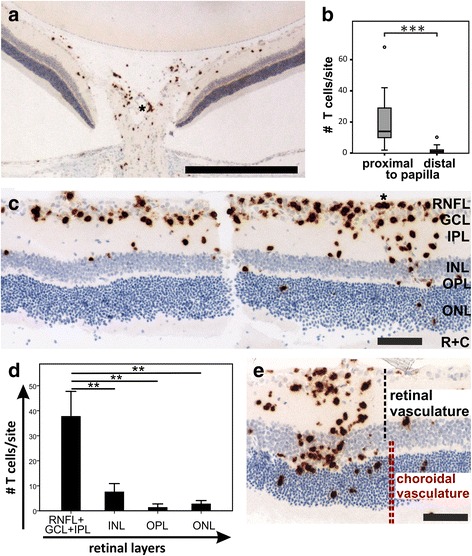Fig. 3.

Two gradients of T cell infiltration into the retina. a CD3+ T cells (brown) in papilla and peripapillary retina. b statistically significant differences in T cell numbers proximal and distal from the papilla, as determined from 1 whole retinal section each of 9 and 13 rats, respectively (p = 0.000076 according to Mann-Whitney U test; plots show the range of T cell numbers (whiskers) with 50 % scores (interquartile range, boxes) centered around median values (horizontal lines within boxes), and mild outliers (circles). c Retinal cross section show an inside - > outside gradient of CD3+ T cells (brown). RNFL: retinal nerve fiber layer, GCL: ganglionic cell layer, IPL: inner plexiform layer, INL: inner nuclear layer, OPL: outer plexiform layer, ONL: outer nuclear layer, R + C: layer of rods and cones. d Quantification of T cell infiltration in different retinal layers, as determined from one representative lesion/rat (n = 5 rats; **p = 0.003, t-test, Bonferroni-correction for multiple comparisons). e Invasion of CD3+ T cells (brown) from vessels spanning the different retinal layers. The contribution of retinal and choroid vasculature to the blood supply is indicated. Bars = 525 μm (a) and 100 μm (c,e). All histological sections were counterstained with hematoxylin to show nuclei in blue; (*) perivascular T cell clusters
